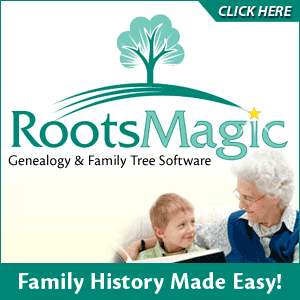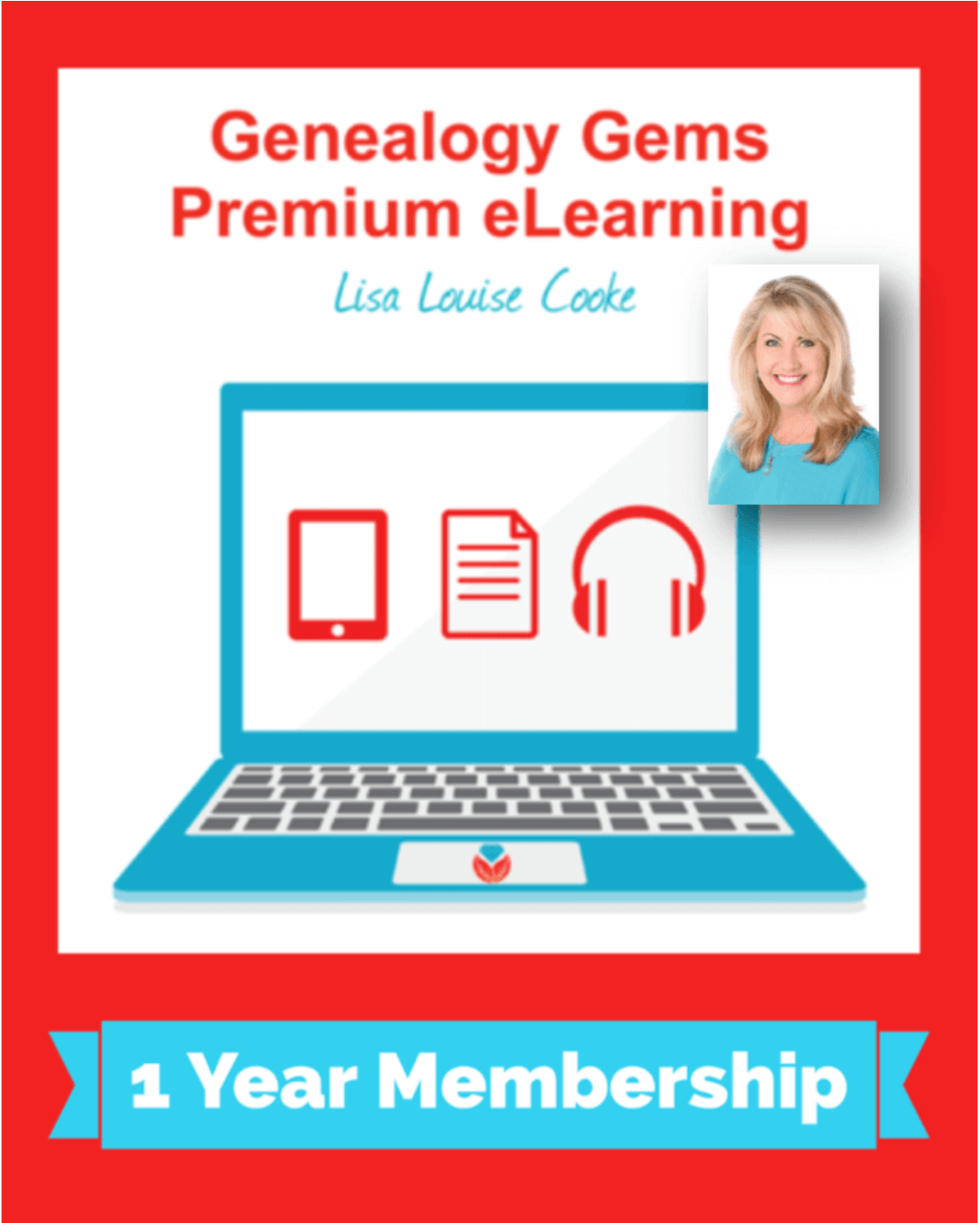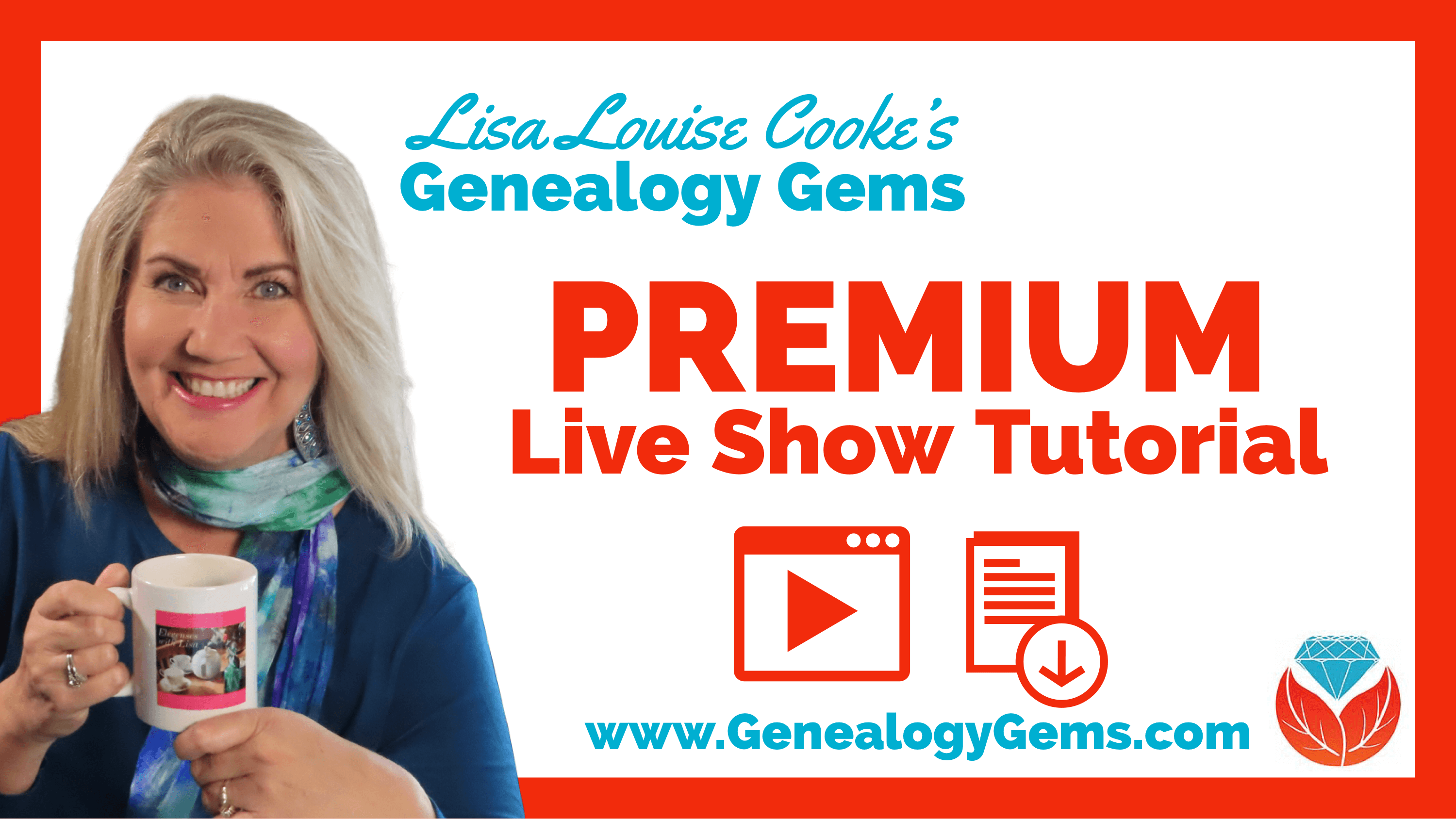Genealogy Gems Podcast Episode 229
with Lisa Louise Cooke
May 2019
Listen now, click player below:
In this episode:
- Two listeners shares an exciting find using Lisa’s research strategies
- Lisa provides next steps on German research in response to a listener question
- Your Master Family Tree, and Sharing Branches Online Explained
- The unusual history of one of the earliest forms of the World Wide Web
NEWS:
Lisa Louise Cooke is back in the studio after two weeks on the road speaking at the Ohio Genealogical Society (OGS) Conference and the National Genealogical Society (NGS) Conference.
Each conference was great and had its own unique feel, and there were many new genealogists in attendance.
Genealogy Gems listener Carol stopped by and enthusiastically shared with how the eBay search strategies for family history that Lisa discussed in episode 140 paid off in a big way!


MAILBOX:

Robin wrote in to share how Sydney Orton’s song with her grandpa in Genealogy Gems Podcast episode 228 brought her to tears in a toll plaza while driving!
Steve wrote in to rave about the value that his new Genealogy Gems Premium eLearning membership has brought to his family history research.
Rylee says she’s grateful to have found the podcast and she shares a story of genealogical discovery that she hopes will inspire others. Rylee asks “How do I find sources for these people? I have searched all over ancestry and Family Search and have had no luck again. I really want to believe that the people I have as Adam’s parents and siblings all the way through his 2nd great-grandparents (paternal) are truly his family but I need to get more information. Where can I go for help with German records and where can I continue my search?”
Lisa’s comments: You’re absolutely right, what you found are just hints. It sounds like it’s time for you to move on from the “Genealogy Giants” (Ancestry, FamilySearch, etc.) and into German records websites, libraries, and archives to find real sources that nail down the family tree.
Lisa recommends the Genealogy Giants quick reference comparison guide.
We have several articles and episodes at Genealogy Gems that can help you do this:
- Go to genealogygems.com
- At the top of the home page select “German” from the “Start Learning” drop down menu
- That will take you to these results pages featuring our German research strategies.
I’m optimistic for you because Germans are known for keeping excellent records, and I have had good luck in searching them.
GEM: Your Master Family Tree, and Sharing Branches Online Explained

I describe it this way: Plant your tree in your own backyard and share branches online.
A master family tree has three important characteristics:
- It is owned and controlled by you.
- It is the final say on what you currently know about your family tree.
- It is protected with online backup to ensure it is safe.
Plant Your Master Family Tree
Lisa uses RootsMagic software for her master family tree. Learn more about GEDCOM files in this article: GEDCOM File (What is It & How to Use This Genealogy File)
Protech Your Master Family Tree
Lisa uses Backblaze to back up her master family tree and computer. Visit www.backblaze.com/lisa
(Using this link also helps keep this free podcast free. Thank you!)
Read more: How to Download Backblaze in 4 Easy Steps
Share Branches Online
Genealogy Giants Guide available in the Genealogy Gems store.

Read Lisa’s article: Planting Your Master Genealogy Family Tree for all of the strategies mentioned in this episode.
The free podcast is sponsored by:
PROFILE AMERICA: Friday, May 24th, 2019
In a way, today marks the 175th birthday of the World Wide Web. Only it was electro-mechanical, not digital. On this date in 1844, Samuel F.B. Morse activated the first telegraph line, sending a dots-and-dashes code message from the U.S. Capitol building to a receiver in Baltimore.
By the late 1850s, the first telegraph cable had been laid across the Atlantic Ocean, and in 1861, the telegraph spanned the continental United States. Over the ensuing decades, the wires wrapped around the world.
From the 1844 demonstration, telecommunications today has grown into a half-trillion dollar a year industry, and employs more than 1 million workers in over 59,000 industry establishments.
You can find more facts about America from the U.S. Census Bureau online at www.census.gov.
Sources:
Joseph Nathan Kane, Kane’s Famous First Facts, Fifth Edition, H.W. Wilson Co., New York, NY, 1997, #7692.
- Demonstration and development, accessed 2/20/2019
- Transatlantic cable, accessed 2/20/2019
- Telecommunications employees and establishments, County Business Patterns, NAICS 517
- Telecommunications revenues, Economic Census, NAICS 517
Become a Genealogy Gems Premium eLearning Member
Gain access to the complete Premium Podcast archive of over 150 episodes and more than 50 video webinars, including Lisa Louise Cooke’s newest video The Big Picture in Little Details.
Learn more here.
(Membership doesn’t auto-renew because we don’t like that either. Prior to your membership expiring you’ll receive a friendly reminder email from us.)
Genealogy Gems App Users
Don’t miss the bonus content in this episode. Tap the “gift” icon on the episode screen in the app.
Get the app here or search for “Genealogy Gems” in your device’s app store.
Download the Show Notes PDF in the Genealogy Gems Podcast app.
How to Get Dual Italian Citizenship
Learn how to get dual Italian citizenship using genealogical information with my guest professional genealogist Sarah Gutmann of Legacy Tree Genealogists.
Watch Live: Thursday, May 12, 2022 at 11:00 am CT
(calculate your time zone)
Three ways to watch:
- Video Player (Live) – Watch video premiere at the appointed time in the video player above.
- On YouTube (Live) – Click the Watch on YouTube button to watch the YouTube premiere with Live Chat at the appointed time above at the Genealogy Gems YouTube channel. Log into YouTube with your free Google account to participate in the live chat.
- Video Player above (Replay) – Available immediately after the live premiere and chat.
Show Notes
My special guest is Sarah Gutmann. Sarah began her obsession with family history when she was 13-years-old. She now has almost three decades of experience helping others climb their family tree. She is a professional genealogist with Legacy Tree Genealogists where she specializes in United States and Italian research. As a veteran classroom teacher, Sarah enjoys teaching various genealogy programs to libraries, historical societies, and lineage organizations across America.
Obtaining Italian Dual Citizenship Overview:
- Who can become a citizen?
- Finding out when your ancestor naturalized and obtaining those documents
- Identifying your ancestor’s specific commune (village)
- Using the Italian archives site
- Requesting vital records from Italy
- Obtaining long form vital records with an Apostille (American records)
Who can apply for dual Italian citizenship?
The following list refers to examples of some categories of eligible persons:
- Direct Descent: from an Italian-citizen parent (if maternal side, after January 1 st, 1948) born in Italy and they were still Italian citizens at the time of the Applicant’s birth. The Applicant and their parents must have never renounced their Italian citizenship. Naturalizations occurred prior to August 15th, 1992 constituted renouncing ones’ Italian citizenship.
- Through Descent: from an ancestor born in Italy who was an Italian citizen at the time of the birth of their child. The Italian citizenship would pass through the generations up until the Applicant (the maternal branch could pass on Italian citizenship to children born after January 1, 1948), provided that none of the descendants in the straight line lost/renounced their Italian citizenship, such as through naturalization prior to August 15th, 1992.
- From an Italian-citizen mother to a child born before January 1st, 1948: applicants who fall into this category will have to appeal to an Italian civil court to obtain the recognition of citizenship.
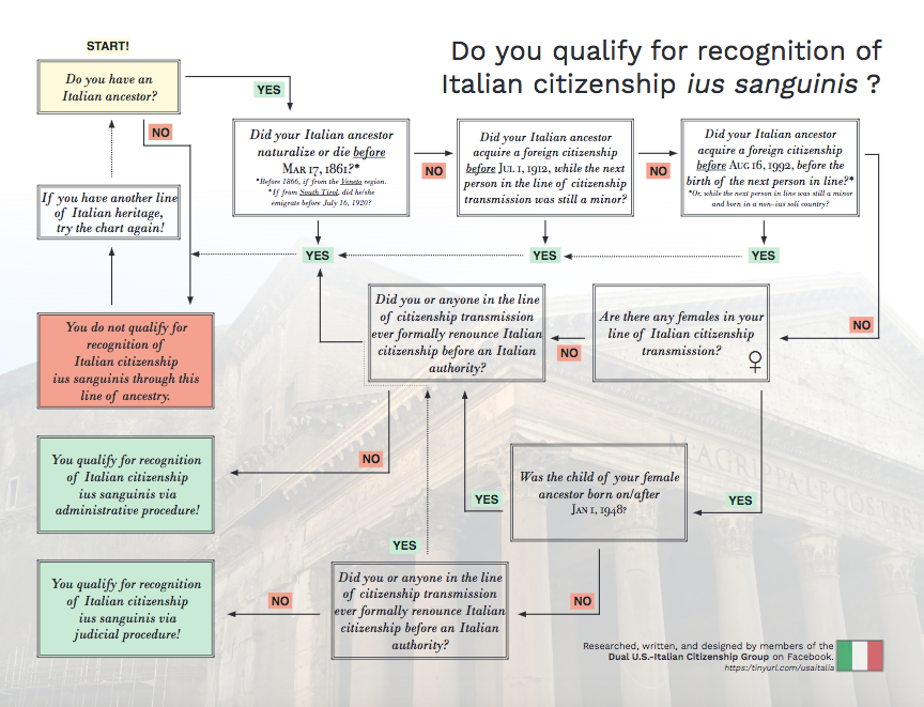
Italian dual citizenship process chart (Source: Dual U.S. Italian Citizenship Facebook Group)
How Do I Know When My Ancestor Naturalized?
Using Census Records:
- Take note of the year of immigration
- Look for passenger records
- Naturalization
- AL- Alien
- NA- naturalized
- PA- have submitted the first papers to become naturalized
- Find Them at Family Search – FREE!
Use the census record as a guide to what court your ancestor may have naturalized through.
Looking for Naturalization Records
- Prior to September 27, 1906, any “court of record” (municipal, county, state, or Federal) could grant United States citizenship.
- Beginning September 27, 1906, naturalization was done through the Federal courts.
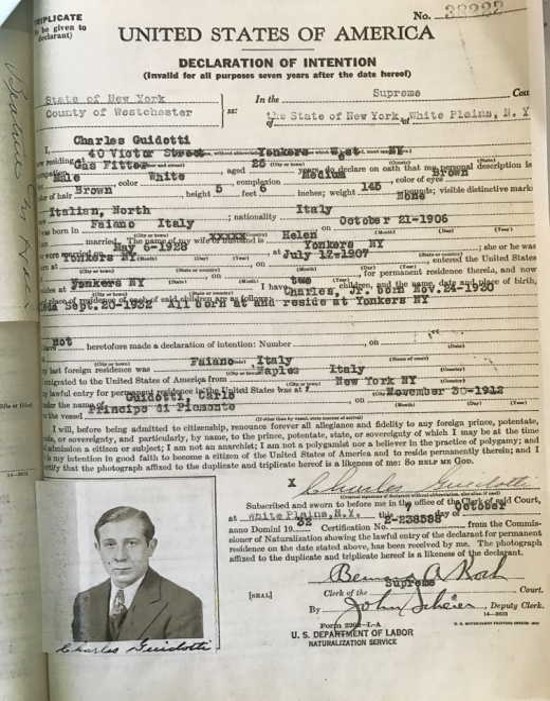
Example: Naturalization Declaration of Intention
Contact U.S. Citizenship and Immigration Services. They have records from 1906 forward.
Order an “Index Search”
On the Genealogy page at the U.S. Citizenship and Immigration Service website click Order an Index Search or Record Request.
Provide as much information you know about the immigrant
- Name
- Addresses in America
- Birthdate and place
- Household members
- Year of immigration
Order Record Request with Request Case ID.
Did Your Immigrant Ancestor Naturalize AFTER Their Child Was Born?
Start Gathering Vital Records!
Vital Records Issued by Italian Authorities
Here are the Italian vital records for events which took place in Italy:
In Line Relatives:
- Birth Certificate: Original Extended Certified Copy Issued by the Comune, with names of parents
- Marriage Certificate: Original Extended Certified Copy Issued by the Comune, with names of parents, and any annotations of divorces
- Death Certificate: Original Extended Certified Copy Issued by the Comune, with names of parents
Out of Line Relatives if born in Italy:
- Spouse’s Birth Certificate: Photocopy of Certificate Issued by Comune in Italy
- Spouse’s Death Certificate: Photocopy of Certificate Issued by Comune in Italy
Finding the Italian Village of Origin
Here are some of the records that may include your ancestor’s village of origin:
- Naturalization Record
- Ship Manifest
- Draft Record
- Vital Records (Birth, Marriage, Death)
- Obituary
If you don’t have success with your ancestor’s records, try searching your Ancestor’s FAN CLUB (Friends, Associates, Neighbors). These are the people who may have come from the same village. Search for their records as listed above.
Contacting the Italian Comune
- Use Comuni-Italiani.it to locate your comune’s website
- Find the comune’s email address and regular mail address
- Write a request letter in Italian and include your i.d. (Letters are available in the “forms” at the Consulate Generale website)
- Follow up! Follow up!
The Comuni-Italiani.it Webiste
Website: http://www.comuni-italiani.it/
This website provides Information and statistics on municipalities, provinces and regions in Italy. You’ll find links to official websites, zip code, number of inhabitants, banks, schools, pharmacies, maps, weather forecast, and other useful links.
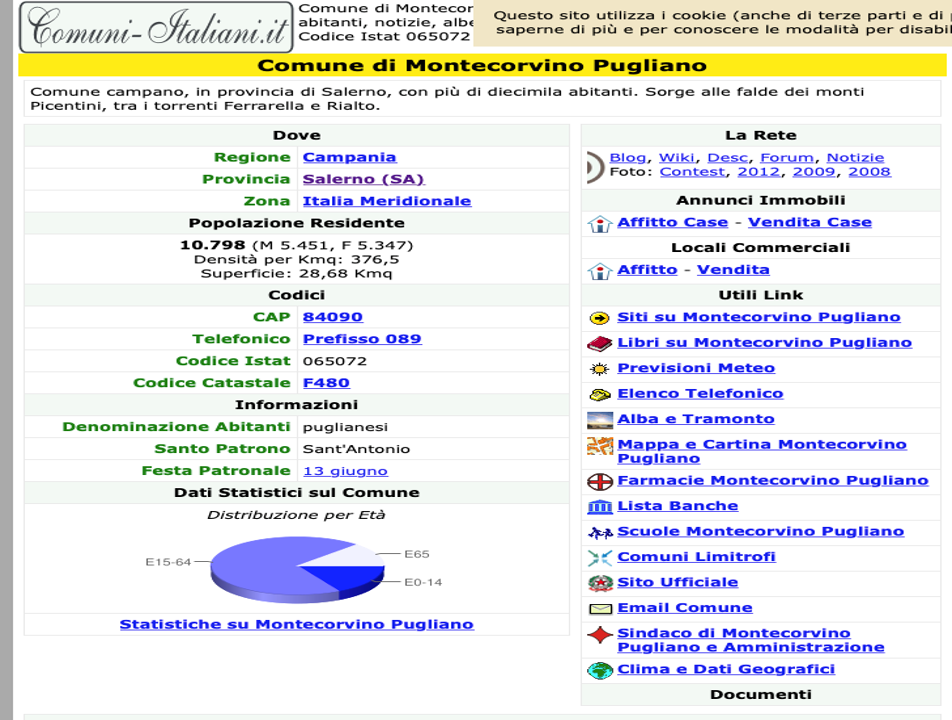
Website: http://www.comuni-italiani.it/
Here’s an example of the official Italian document you are trying to obtain:
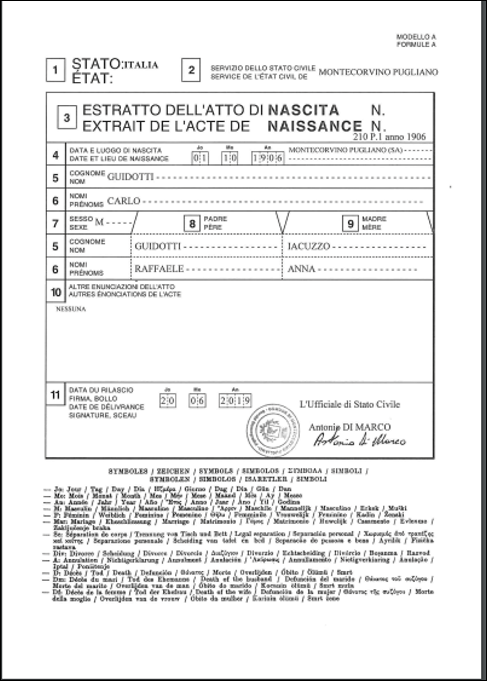
The goal
This is your golden ticket to the Italian consulate and getting that coveted citizenship.
Vital Records Issued by Non-Italian Authorities (American Records)
In Line Relatives ORDER NEW DOCUMENTS
- Long Form Original Legalized by the Apostille & Translation of Document Only
- Birth Certificate
- Marriage
- Divorce
- Death Certificate
Out of Line Relatives
- Photocopy of birth and death
What is an Apostille?
An Apostille (pronounced “ah-po-steel”) is a French word meaning certification. An Apostille is a specialized certificate, issued by the Secretary of State. The Apostille is attached to your original document to verify that it is legitimate and authentic.
Research your General Italian Consulate
- MAKE YOUR APPOINTMENT!!!!
- Fill out Citizenship forms
- Download checklist and instructions
Resources
Downloadable ad-free Show Notes handout for Premium Members.
Learn more about becoming a Genealogy Gems Premium Member.


